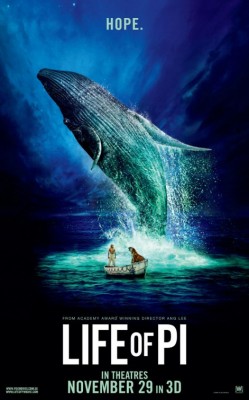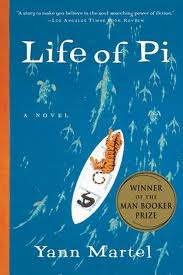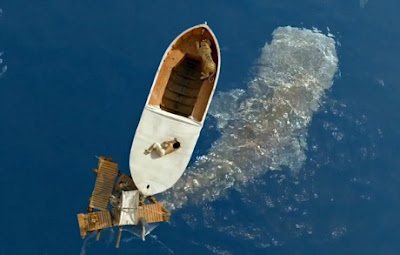Masterful Translation – Life of Pi
Face it, Movie Goers and Fans of Fiction. Adaptations are hard, and the venture of adapting a beloved novel is certainly a perilous one. When embarking on such a journey, filmmakers are faced with challenges of translating a text that may well be cerebral, emotional, and brought to us by the inner thoughts of one or more characters. This doesn’t always translate to film, and indeed, it is a translation. The language of novels is words while the language of film weighs heavily of images. Sure, there is dialogue and, of course, the voice over, but visual images and words just aren’t the same. And just as certain English concepts don’t exist in say Japanese, or vice versa, words don’t always translate to images. Oh and while we’re talking about challenges, don’t forget the rabid fans of novels – they are an important demographic filmmakers want on their sides. But this cohort can be exceedingly brutal to artists that are trying to perform a remarkable feat. Just try expressing a few sentences in another language, and report back. Accurate communication across languages is challenging. Rarely do I find an adaptation that I feel effectively translates an author’s words into the language of film. Just like any other translation, key aspects and subtexts are lost. But occasionally, I am wonderfully surprised.
For Mike and I, no holiday is complete without a visit to the movie theater (and many weekends aren’t). This past Friday night, we went to see Ang Lee’s most recent endeavor, Life of Pi. I was skeptical. A fan of the novel, I knew an attempt at translating Yann Martel’s three hundred and nineteen page, mostly first person, journalistic style narrative could go horribly wrong. And because I so love the book, I cringed a little despite the beautiful trailers.

Apparently, my fears were unfounded. Mr. Lee’s film version of Life of Pi is one of the best adaptations I have ever had the privilege of experiencing, and as a matter of fact, I would put it beside Peter Jackson’s Lord of the Rings trilogy. To effectively adapt, a filmmaker must often capture the essence of the novel in ways that do not involve narration and/or words. Certainly, Mr. Lee took some dialogues directly from the novel, and at times, some narration was transformed into dialogues. But fundamentally, the success of this film lies in Mr. Lee’s ability to show Pi’s anguish, triumph, fear, and wonder by highlighting isolation, quiet, elation, and rage through the vast expanse of the ocean, dream sequences, and interaction with a world that is unfamiliar. (Well, except the whole water part.) Life of Pi is about a young man discovering himself, the power within himself, and his connection to the universe. Through images of discovery – a vast ocean of glowing plankton, flying fish, giant whales, a colony of meerkats, and even how to make a raft float – Lee captures the essence of all the character’s discoveries.
For those who attempt adaptation, one key to success seems to be taking a part of the novel that is extremely recognizable and condensing it in the briefest moment, an image shown just long enough for recognition. Zach Snyder did this in The Watchmen – literally bringing to life, a single panel from the graphic novel as Night Owl’s ship lifts off the ground.
Mr. Lee does this in Life of Pi. The following is the cover of the novel I read. I believe it is the North American cover.

Now, consider this frame from the film. Please don’t be overly distracted by the giant whale shark (I think it’s a whale shark).

See? It’s here! Even down to Richard Parker’s (the tiger’s) reclining position. Unbelievably recognizable, this image gives those who have read the work the feeling of walking into an old bedroom, as if it was done and kept just for us. Yes, this detail is minute, but in adaptation, the details matter. Just as in translation, subtexts and finding comparable concepts are keys to success.
Sure, the film version has a romantic side story that doesn’t exist in the book. Perhaps it was placed there to speed up the beginning. (Probably the only criticism I have of the novel – it’s a bit of a slow start.) Perhaps it was to give movie goers something familiar. (What do you mean you’ve made a movie without a romantic interest!?) Ultimately, the reason doesn’t matter because the essence of the novel was captured. Yes, some parts were left out. They had to be, or I would have still been in the theater on Saturday morning. Everything can’t be there, but what was important most definitely was.
Mr. Lee, my hat is off to you.
Leave a Reply